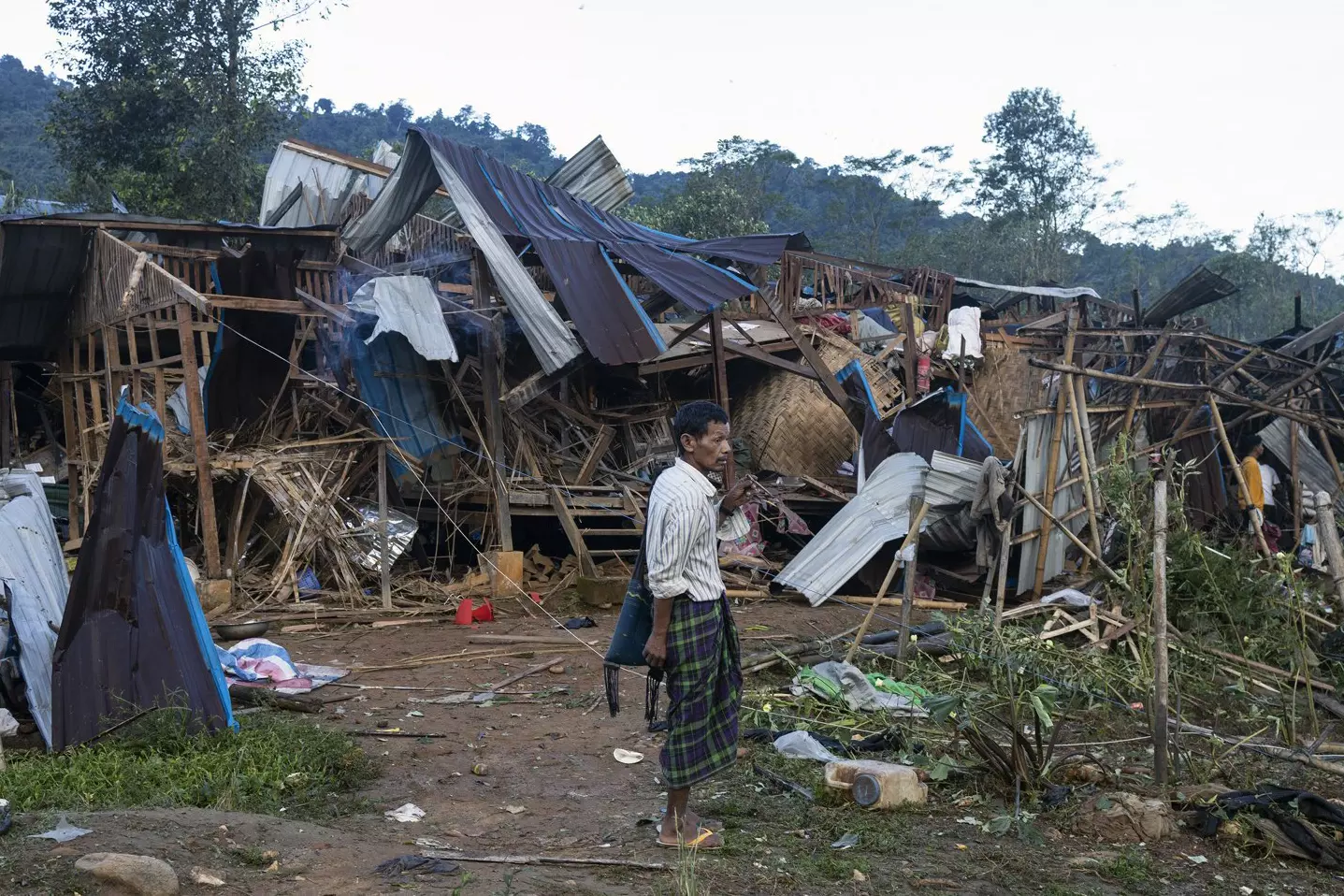
30 killed as artillery strikes Myanmar refugee camp; military’s role suspected
Myanmar’s military, however, has denied its role in the attack with spokesperson Maj. Gen. Zaw Min Tun stating that area where the explosions occurred may have been used to store bombs for drones

Myanmar's military was accused of launching an airstrike on a camp for displaced persons in the northern state of Kachin late on Monday (October 10) that killed about 30 people, including about a dozen children, Kachin militants and activists and local media said.
Col. Naw Bu, a spokesperson for the Kachin Independence Army, said 29 people including 11 children under the age of 16 were killed and 57 others injured in the attacks carried out by air and artillery. The casualties occurred at the Mung Lai Hkyet displacement camp in the northern part of Laiza, a town where the headquarters of the rebel KIA is based.
A spokesperson for Kachin Human Rights Watch gave slightly different figures, saying 19 adults and 13 children were killed in the attack, which occurred shortly before midnight.
Laiza is about 324 km (200 miles) northeast of Mandalay, Myanmar's second-biggest city.
Myanmar’s National Unity Government, the main nationwide opposition group that considers itself the country's legitimate administrative body, said a kindergarten, school, church and many civilian houses were destroyed at the camp.
“This deliberate and targeted attack by the terrorist military council on civilians fleeing conflict constitutes a blatant crime against humanity and war crime,” it said.
Myanmar's military government “has taken advantage of the moment of the international community's attention on the recent developments of the Israel-Hamas conflict to commit yet another crime against humanity and war crime," it added.
Naw Bu said it was unclear how the attack was carried out because people did not hear a jet fighter on a bombing run. The absence of such a sound, familiar in many parts of the countryside, could indicate that the camp was hit by air-to-ground missiles fired from a distance or by an armed drone. He said the army used artillery to shell an area including the camp and nearby villages where about 400 people live.
In a statement over the phone to state television MRTV, military government spokesperson Maj. Gen. Zaw Min Tun denied responsibility for the attack but said the military is capable of attacking the headquarters of all of Myanmar's insurgent groups. Zaw Min Tun said the area where the explosions occurred may have been used to store bombs for drones and unmanned aircraft for the Kachin fighting forces.
It was impossible to independently confirm details of the incident, though media sympathetic to the Kachin posted videos showing what they said was the attack's aftermath, with images of dead bodies and flattened wooden structures.
Myanmar Witness, a non-governmental organisation that collects and analyzes evidence related to human rights incidents, said it confirmed the camp was damaged but that it was still investigating the cause.
Myanmar has been in turmoil since the military overthrew the elected government of Aung San Suu Kyi in February 2021, triggering widespread popular opposition. After peaceful demonstrations were put down with lethal force, many opponents of military rule took up arms, and large parts of the country are now embroiled in conflict. The military government in the past year has stepped up the use of airstrikes in combat against two enemies: the armed pro-democracy Peoples Defense Forces, which formed after the 2021 takeover, and ethnic minority guerrilla groups such as the Kachin that have been fighting for greater autonomy for decades.
The military claims it targets only armed guerrilla forces and facilities, but there is considerable evidence that churches and schools have also been hit and many civilians killed and wounded. Artillery is frequently used. The Kachin are one of the stronger ethnic rebel groups and are capable of manufacturing some of their own armaments. They also have a loose alliance with the armed militias of the pro-democracy forces that were formed to fight army rule.
(With inputs from agencies)

